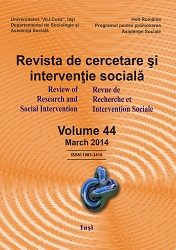The Spatial Analysis of Hot Spots in Urban Areas of Iran. The Case Study: Yazd
The Spatial Analysis of Hot Spots in Urban Areas of Iran. The Case Study: Yazd
Author(s): Nahid Ardian, Ebrahim Masoudnia, Mohammd Hasan Ehrampoush, Mohamad Hosein Baghianimoghadam, Mahdi Ardian, Hasan HekmatniaSubject(s): Social Sciences
Published by: Expert Projects Publishing
Keywords: crime analysis; spatial crime distribution; urban design; hotspot analysis; population density.
Summary/Abstract: The 20th century can be characterized by its urban population density, urban geographical stratification by socio-economic status and urban crime increase. Concerning the importance of prevention in social planning, policies and planning concentrate on crime prevention and emphasize the backgrounds and contexts leading to crimes. The present study aims to analyze the crime hot spots of Yazd and to suggest effective solutions to reduce crimes occurrences. The present study is a cross-sectional descriptive study. Data was collected by studying offenders’ files, achieved in the Yazd Police Office, in different districts of Yazd between 2008 and 2010. The results revealed that the mean center of all kinds of crimes is in city center. The nearest neighbor index for drug crimes distribution had a full cluster distribution. The correlation coefficient confirmed the relationship between population density and committing the crimes. The results revealed that most of the crimes were committed in abandoned, residential, street networks and commercial land uses, while in religious and cultural land use less crime occurred. There were significant correlation between population density, different urban land uses and the rate of crime. The rate of crime in abandoned and populated areas was more than other areas.
Journal: Revista de Cercetare şi Intervenţie Socială
- Issue Year: 2014
- Issue No: 44
- Page Range: 103-115
- Page Count: 13
- Language: English

